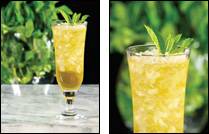Depth of Field
| Depth of field refers to the area seen by the camera lens within which objects are in focus. Narrowing the depth of field can improve the composition of a picture because your view is limited to just what the photographer wants you to see. This technique directs the viewer's attention to what is sharp, using other, out-of-focus elements to complement the subject, add visual interest, and provide a softer, warmer feeling to the photograph. Sometimes, even a mistake in the background can look good when it is shot at a low angle and thrown out of focus! The three factors that determine an image's depth of field are as follows:
In addition, shooting at a low angle can provide more depth in a photo. Because a greater front-to-back distance is visible in a low-angle photo, backgrounds will be out of focus if they are farther away. |
